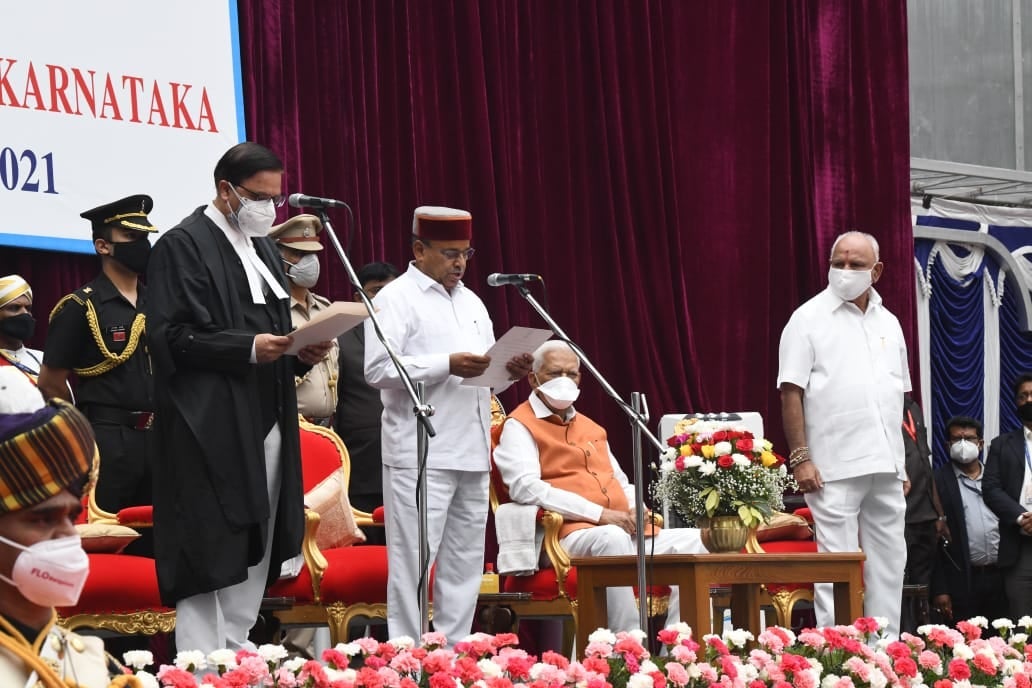Summary
Indian Prime Minister Narendra Modi’s first major Cabinet reshuffle in his second term was preceded by a reshuffle of state governors. The new appointments continued a policy of placing party loyalists in the governor’s chair.
Amid the buzz over the first major Cabinet reshuffle of the Narendra Modi government’s second term in India, a reshuffle of governors on 6 July 2021 went relatively unnoticed. Four new governors, including Union minister Thaawarchand Gehlot, were appointed and four others shifted. Gehlot was appointed Karnataka’s governor while three other Bharatiya Janata Party functionaries were appointed governors of Gujarat, Himachal Pradesh and Mizoram. The new appointments, as well as earlier ones made during the Modi government’s tenure, continued a policy first begun by the Congress of appointing party loyalists to the governor’s post.
During the long period of Congress dominance, the governor’s position had largely been reduced to furthering the Centre’s interest in the states. While the Congress did occasionally appoint eminent personalities and technocrats, such as Gopalkrishna Gandhi in West Bengal, as governors, by and large, the position was reserved for superannuated politicians. The latter practice has continued and been exacerbated under the Modi government. West Bengal’s Governor, Jagdeep Dhankad, is possibly the best example of a governor serving the Centre’s interests. Ever since his appointment, Dhankad has sought to undermine the state government in every possible manner. However, since the West Bengal Assembly election, he has, in the words of a political analyst, taken the place of the “political opposition” in the state.
Though Dhankad’s actions might be in keeping – in intent though not in degree – with many contemporary and past governors, it once again raises questions about the role of a governor. Since the governors are appointed by India’s president – on the advice of the party in power at the Centre – and continue in office “during the pleasure of the president”, according to Articles 155 and 156 of the Indian Constitution, they usually toe the Centre’s line.
Indeed, there was a heated debate in the Constituent Assembly in 1949 on the role of governors. There were many members, such as H V Kamath, K T Shah, Rohini Kumar Chaudhuri and Biswanath Das, who were critical of the powers of the governor, viewing the position as a relic of the colonial era and one that was unanswerable and “capable of creating mischief.” Das, a Prime Minister of Orissa in colonial India and later a governor of Uttar Pradesh, was one of the most vocal critics of the governor’s position. He had presciently noted that since the governor was appointed by the Centre, it was quite likely that he or she might not be acceptable in an opposition-ruled state, especially if the “power to give administrative pin-pricks is vested in the governor.”
As a compromise, B R Ambedkar had put forward a proposal that the governor should be nominated by the president from among a panel elected by the provincial legislatures or state assemblies. However, that proposal never made it to the Constitution. Subsequently, several state-appointed commissions have recommended changes to the way governors are appointed. The first Administrative Reforms Commission in 1969 said that while the appointment should remain the discretion of the Centre, chief ministers of respective states should be consulted. The Sarkaria Committee on centre-state relations recommended in 1988 that only eminent persons who had not taken part in politics “in the recent past” should be appointed governors. More recently, the Justice M M Puncchi committee lamented that people “unworthy of holding such high constitutional positions” were being appointed as governors.
Ambedkar attempted to settle the misgivings by making a distinction between the “functions” and “duties” of a governor. He concluded that the governor was not a representative of a “party” but of the “people” of the state. There was arguably enough ambiguity in this formulation for a governor to be activist and partisan if he or she so desired.
Ambedkar’s faith in the Centre and governors would be misplaced since most governors, especially in recent times, have proved to be representatives of the party that appointed them and not impartial constitutional authorities. The very fact that governors are expected to resign when there is change of government at the Centre is proof of that. Indeed, the partisan actions of the governors have borne out the fears of the critics in the Constituent Assembly.
. . . . .
Dr Ronojoy Sen is Senior Research Fellow and Research Lead (Politics, Society and Governance) at the Institute of South Asian Studies (ISAS), an autonomous research institute at the National University of Singapore. He can be contacted at isasrs@nus.edu.sg. The author bears full responsibility for the facts cited and opinions expressed in this paper.
Photo credit: Wikimedia Commons
-
 More From :
More From :
-
 Tags :
Tags :
-
 Download PDF
Download PDF



